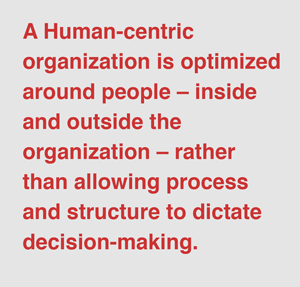RAPPORT // Is the Pentagon Reorganization All for Naught?


Once again, the Pentagon has reorganized.[1] Motivated by a concern about how emerging technologies will impact the future of war, the department has aligned its leadership structure to put particular focus on quantum science, hypersonics, artificial intelligence, and directed energy. It’s a change that organizes and assigns specific responsibilities to two relatively new offices within the Department of Defense (DoD) – the offices of the Undersecretary of Defense for Acquisition and Sustainment and the Undersecretary of Defense for Research and Engineering (USD R&E).
This first step in creating a new structure focused on the evolving defense landscape is intended to put greater resources toward how the U.S. buys and develops weapon systems. Specifically, the office of Acquisition and Sustainment ensures that the current weapon system acquisition, sustainment, and industrial policy activities are executed effectively to get new and improved weapons systems to our warfighters. The second, Research and Engineering, is working to close the technological gap against our enemies.
Will the recent organizational shuffle accomplish what it is meant to accomplish? I am skeptical. While dividing up responsibilities for today and tomorrow is a positive step forward, that reorganization falls short of considering the full implications of the training, soft skills, and transdisciplinary talent needed to make them work. It appears the architects of this new organizational structure made a key mistake. They seem to have underestimated the value and the importance of the human-centric organization, opting instead for a task-centric structure.
 This is not an uncommon error. Particularly in organizations for which future trends involve threat, the inclination tends to be to focus on trying to solve a problem with solutions (e.g., digital strategy or Artificial Intelligence) rather than people. We know, however, that a human-centric organization, which is optimized around people rather than process or structure to dictate decision-making, has a greater potential for longevity. Establishing that long-term foundation is vital for strengthening these technology and weapon approaches that will protect the country against future threats of war.
This is not an uncommon error. Particularly in organizations for which future trends involve threat, the inclination tends to be to focus on trying to solve a problem with solutions (e.g., digital strategy or Artificial Intelligence) rather than people. We know, however, that a human-centric organization, which is optimized around people rather than process or structure to dictate decision-making, has a greater potential for longevity. Establishing that long-term foundation is vital for strengthening these technology and weapon approaches that will protect the country against future threats of war.
Responsibilities in the Newly Divided Acquisition, Technology and Logistics (AT&L) Department
The USD R&E brings focus to five technology research areas and four advanced technology capabilities areas, including:
- Artificial Intelligence/Machine Learning
- Microelectronics
- Quantum Physics
- Space
- Hypersonics
- Directed Energy
The new organizational focus signals an urgent need to ensure cutting-edge scientific research and development is producing innovative new technologies to meet U.S. national security needs for 2030 and beyond. What is lacking in this new, highly detailed organization, however, is an emphasis on how the DoD and Aerospace and Defense industry will recruit and develop the critical human capabilities required to ensure success with these massive and emerging technologies. Assuming that the DoD will have access to necessary human talent for the purpose of technological advancement is a flawed and dangerous assumption that could ultimately end up widening the capability gap for U.S. national security.
Without a deliberate human capital strategy and a place of prominence within the new organization, workforce talent may become the Achilles’ heel for the DoD – and the U.S.
Understanding and even influencing how technical talent is educated, acquired, and accessed in the near future will have a massive impact on the DoD’s ability to access the STEM (science, technology, engineering, and math) professionals they need to push their vital new initiatives forward. It’s critical that USD R&E focus on human capital with as much energy and support as it is giving to the technology areas in which these professionals work.
Working Within Future Shocks
The workforce that is needed today will not be the workforce of tomorrow. Part of a successful reorganization is recognizing and working in the context of future shocks. We see five that should be part of the conversation.
- By 2030, the majority of the world’s top technology talent will not reside in the U.S.
- Open innovation cycles that inspire new ideas must become more valuable to our nation’s technological output than protecting intellectual property (IP) and classified technology.
- The rising tide of liberal arts workforce may disrupt the previous model of scientific silos.
- Micro-credentialing will change how the Pentagon values and contacts for technical experience.
- Competition for STEM experience and expertise is a global competition, one in which DoD will need to compete against other countries and commercial industries.
For the DoD and those who support its missions, attracting the right talent and deploying the appropriate skills to meet the needs of a rapidly changing national security environment will be (not may be) the most pressing long-term challenge in this new structure. Those who want to work for the Defense Department today may not be those who want to work for it tomorrow. Understanding how to take advantage of opportunities and mitigating the challenges associated with global human capital and talent is critical for the success of the Pentagon’s transformational imperative.
Before the ink dries on the current reorganization and new institutional norms and behaviors are establish, Pentagon leadership must consider becoming a human-centric organization.
The decision whether to lead with people or to lead by process or task will have a profound positive effect on closing our national security technology gap. A human-centric organization will place the emphasis and value on people through deliberate strategy, prominent function, and organizational structure. As such, we’d recommend the creation of a Human Strategy office that reports directly to the Under Secretary of Defense for Research and Engineering, Dr. Michael Griffin. That team would help to ensure the DoD prioritizes a human capability strategy at least as high as technology development.
The new Human Strategy office would lay the groundwork for endeavors, including:
- Understanding the dynamics and global competition for the human talent necessary to support the research and engineering of advanced technology capabilities.
- Develop a future-focused human capital strategy that leads to the development of new technologies.
- Create new models for accessing and incentivizing talent necessary for successful technology research and development.
Without prioritizing people in this next phase of the Pentagon’s structure, there’s a great risk that not much will actually change. It’s only by ensuring that human capacity and engagement underpin these new process and production efforts that the DoD will close the critical future defense gaps that are so concerning.
Join the conversation. What human skill sets do you think are most critical to the success of this new defense structure?
{{cta(‘4d845705-1e34-48c3-be85-13c3f028019c’)}}
[1]“Revealed: The new structure for the Pentagon’s tech and acquisition offices” Defense News, Aaron Mehta, July 17, 2018.
- Categories
- Leadership
- Workforce of the Future


 About the Authors
About the Authors